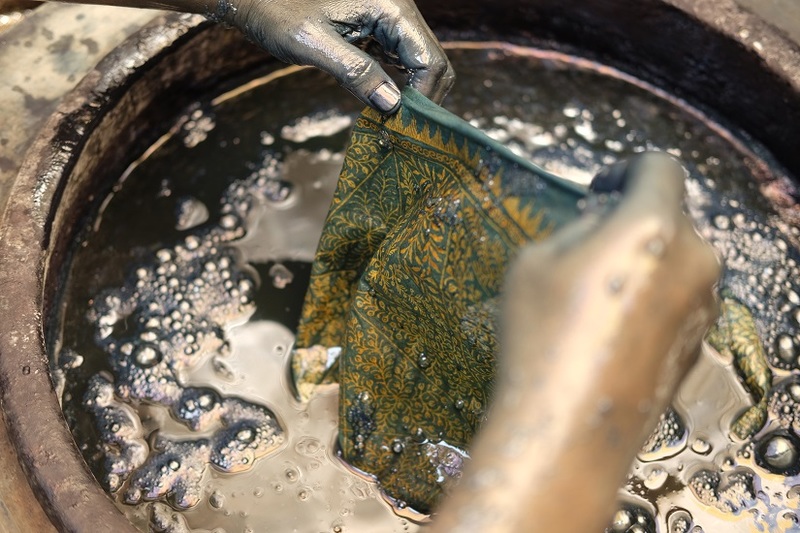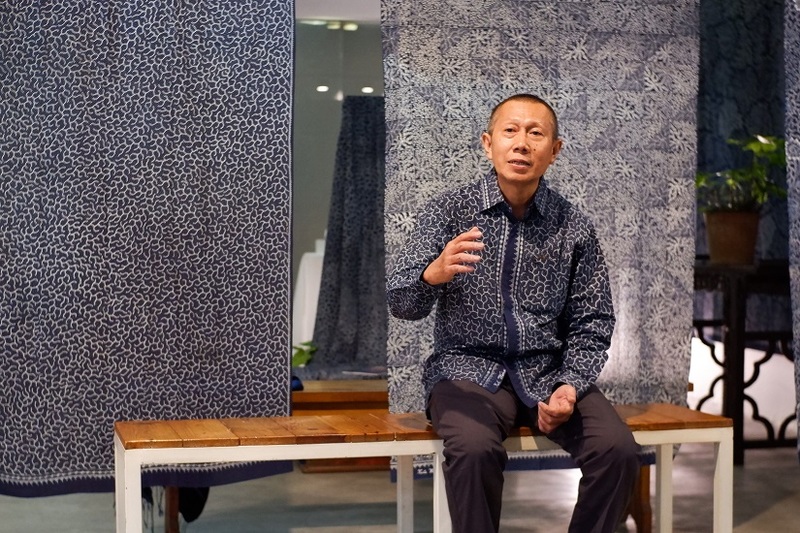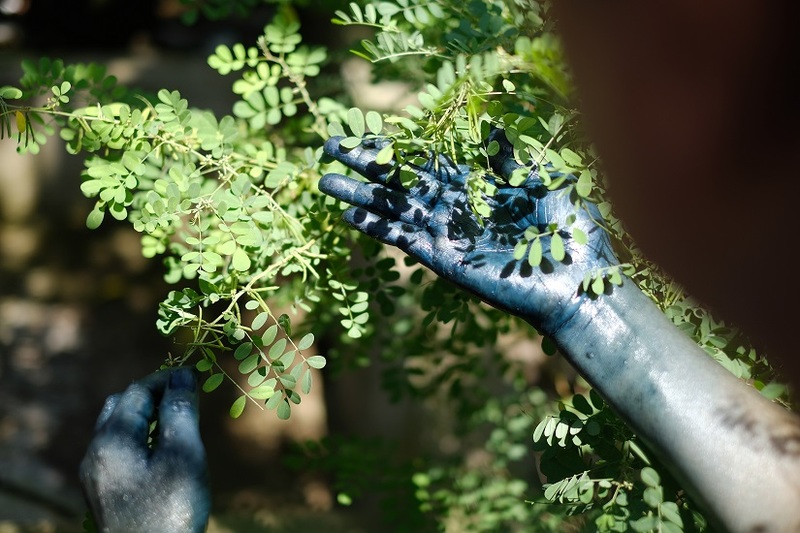Indonesia commemorates National Batik Day every 2 October after UNESCO designated batik as a Humanitarian Heritage for Oral Tradition and Intangible Culture. In order to celebrate the day, there are many activities held to reinforce batik as Indonesian culture and heritage during the month, one of them is about natural-dyed indigo batik.

In October, the Indonesian Heritage Society held a Night Study Group to discuss Craftmanship in Indigo Dyes featuring Zahir Widadi, a renowned batik artist and archaeologist who has a passion for indigo-dyed batik. And in mid-October, in celebration of National Batik Day, an Indonesian natural dye social enterprise that promotes traditional knowledge folk arts, and intangible cultural heritage, Kelir, collaborated with Zahir Widadi to launch a book entitled Javanese Indigo Batik: Discovering the Ancient Wisdom of the Indigo Natural Dyeing Process.
The book which is the results of Zahir’s decade-long research on the local wisdom behind the natural dye (indigo) in Javanese batik, was first launched in Brisbane, Australia, where Zahir was also invited to share his research results by The Asian Arts Society of Australia (TAASA) at the Queensland Gallery of Modern Art, as well as give a public lecture at Queensland University of Technology. Meanwhile, the series of book launches in Indonesia was accompanied by a closed exhibition of the latest collections from Kelir and Zahir, in Jakarta.
Zahir Widadi, who comes from Pekalongan, Central Java, a city known for its batik villages, is captivated by the beauty of the natural blue colour and the process of making indigo batik when he was serving as the Director of the Batik Museum in Pekalongan (2006-2011). During that time, he had the opportunity to inspect up close the museum’s exhibits, among which were the batik clothes worn by the sultans at the Surakarta Hadiningrat Palace (Keraton). He was astonished by every piece of batik in the royal collection was still in mint condition even though the collection was more than 80 years old. The condition and the blackish-blue indigo and reddish-brown sogan hues looked as vivid as if they had been dyed only recently. Since then, he prompted himself to dedicate his life to preserving the ancestral technique of indigo batik dyeing.

“In the days of the Keraton hundreds of years ago and during the Mataram Kingdom, there was a dyeing process called mbironi, which means blue or making it blue. If we look at the Keraton batik, it is identical to the brown colour. But before dyeing brown, the fabric is dyed blue first with indigo. This is so special that indigo blue dyeing has the smallest molecule of all-natural dyes. This colour can penetrate and absorb down to the thinnest fibres of the fabric, making the colour more solid. That factor can make the colour not fade and can last a long time. And, at that time, textiles dyed with indigo had a very high demand, so they were priced at gold. At that time also the colour is said to be blue gold. That’s where indigo first came out and was known.” Zahir said.
He also stated that there are several plants that produce a blue colour, but indigo is the one that has been used in the ancient Javanese batik. The Indigofera Tinctoria plant itself -originally from India- is a shrub type of plant with tiny leaves. Initially, the plant was brought to Java by the Dutch trading company (VOC) as a commodity to be cultivated for export.
More than 15 years ago, I stumbled upon bushes of Indigofera tinctoria plants growing wild in the city of Pekalongan. When I started to look more closely, I found that the plants were growing all over the city, and also in surrounding towns such as Pemalang, Tegal, Kendal, and Batang. The plants grow well along the sun-drenched and scorching hot banks of the rivers that flow into the Java Sea to the north.” Added Zahir who now also serves as a lecturer in Batik Philosophy at Pekalongan University.
In addition, the blue dye produced from the indigo plant also has a very unique characteristic. The blue colour when exposed to sunlight can create a purplish hue.

“If one says she/he has indigo batik, try taking it to the sun. If the colour has a purplish hue that radiates, it’s real indigo. But if not, it’s probably not indigo. Because the dyeing of indigo batik can make the colour or pigmentation more out when exposed to the sun,” concluded Zahir.
Zahir’s love for batik has not only revived ancestral wisdom through documenting the indigo dyeing technique so that it can be passed on to future generations but he and Kelir also popularize the Latar Tanahan background batik motif by making it the main motif in the production of his indigo batiks.
According to him, the traditional batik motif that we know widely consists of three layers; Kelowongan, which is the outline or the main motif design and becomes the masterpiece of the batik, for instance, flowers or butterflies, Isen-Isen is a complement to the main motif that acts as the content of the batik motif, for example, flower petals or butterfly wings or in the form of dots between the gaps of Kelowongan, and Tanahan, the tiny patterns to fill the space in the background; behind or underneath the main design. The function of Tanahan is as a foundation of batik itself.
As its name suggests, tanahan that meaning ‘earth’ is an ornament that provides the solid support that is the foundation of every piece of batik cloth. Originally, the tanahan ornamental patterns were developed by batik artisans who had been inspired by the shapes of the small plants and flower buds in the areas where they lived, such as ferns or manggar (the flower pistil of a coconut palm tree).

“Although the motif Tanahan is an important foundation for batik cloth, it is usually treated as a second-class ornamental variety. These patterns are usually ‘hidden’ behind the splendour of Kelowongan that dominates a piece of batik cloth. By raising the Tanahan background as the main motif in indigo batiks, I want to show the beauty and richness of batik ornaments that are rarely discussed and receive little attention despite having the highest level of difficulty in making them.” Zahir conveyed.
With his dedication and efforts to promote the philosophy and meaning behind the Latar Tanahan batik motif, Zahir won an international award from the World Crafts Council in 2018.
And, Kelir also succeeded in popularizing the indigo Latar Tanahan batik from Indonesia in the Australian market through a fashion show in collaboration with Australian designer Carla Va Lunn and the international brand Silk Laundry.







